Discover 20 hidden attractions, cool sights, and unusual things to do in Lublin (Poland). Don't miss out on these must-see attractions: Majdanek concentration camp, Zamek, and St. John the Baptist Cathedral. Also, be sure to include Chapel of the Holy Trinity in your itinerary.
Below, you can find the list of the most amazing places you should visit in Lublin (Lublin).
Table of Contents
Majdanek concentration camp
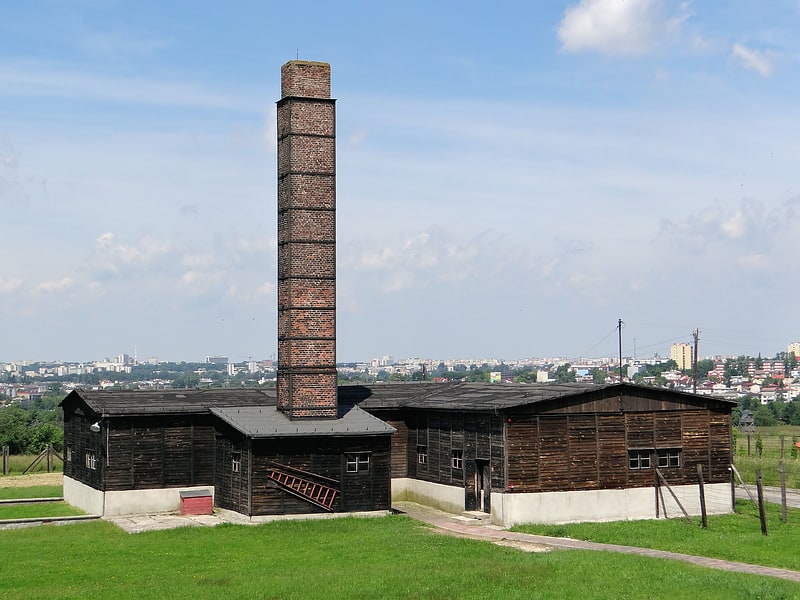
Also known as: Lublin
Nazi concentration camp. Majdanek was a Nazi concentration and extermination camp built and operated by the SS on the outskirts of the city of Lublin during the German occupation of Poland in World War II. It had seven gas chambers, two wooden gallows, and some 227 structures in all, placing it among the largest of Nazi concentration camps. Although initially intended for forced labor rather than extermination, the camp was used to murder people on an industrial scale during Operation Reinhard, the German plan to murder all Polish Jews within their own occupied homeland. The camp, which operated from 1 October 1941 to 22 July 1944, was captured nearly intact. The rapid advance of the Soviet Red Army during Operation Bagration prevented the SS from destroying most of the camp's infrastructure, and Deputy Camp Commandant Anton Thernes failed to remove most incriminating evidence of war crimes.
The camp was nicknamed Majdanek in 1941 by local residents, as it was adjacent to the Lublin ghetto of Majdan Tatarski. Nazi documents initially described the site as a POW camp of the Waffen-SS, based on how it was funded and operated. It was renamed by the Reich Security Main Office as Konzentrationslager Lublin on April 9, 1943, but the local Polish name remained more popular.
After the camp's liberation in July 1944, the site was formally protected by the Soviet Union. By autumn, with the war still raging, it had been preserved as a museum. The crematorium ovens and gas chambers were largely intact, serving as some of the best examples of the genocidal policy of Nazi Germany. The site was given national designation in 1965. Today, the Majdanek State Museum is a Holocaust memorial museum and education centre devoted entirely to the memory of atrocities committed in the network of concentration, slave-labor, and extermination camps and sub-camps of KL Lublin. It houses a permanent collection of rare artifacts, archival photographs, and testimony.[1]
Address: Droga Męczenników Majdanka, Lublin
Zamek
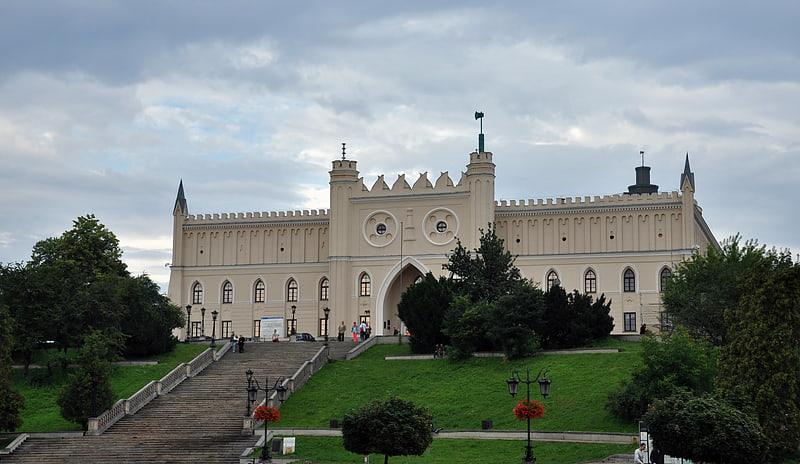
Castle in Lublin, Poland. The Lublin Castle is a medieval castle in Lublin, Poland, adjacent to the Old Town district and close to the city center. It is one of the oldest preserved Royal residencies in Poland, established by High Duke Casimir II the Just.[2]
Address: Zamkowa 9, 20-117 Lublin
St. John the Baptist Cathedral
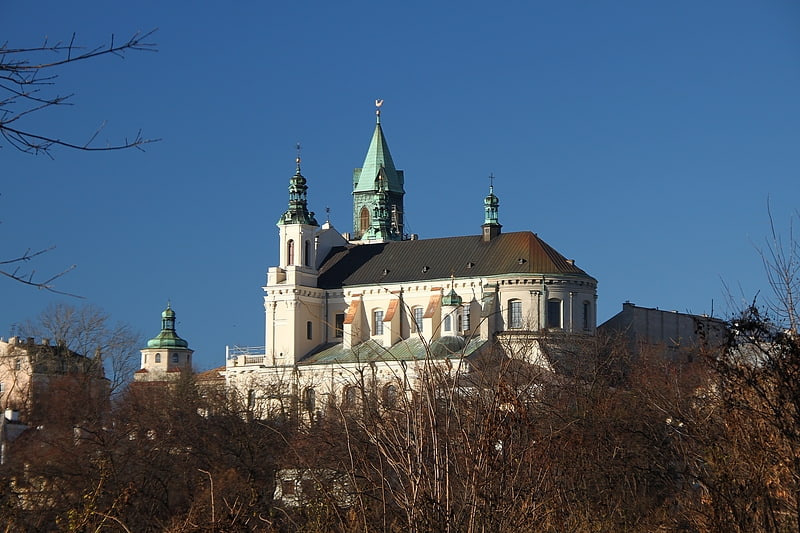
Also known as: Archikatedra św. Jana Chrzciciela i św. Jana Ewangelisty w Lublinie
Cathedral in Lublin, Poland. The Cathedral of Saint John the Baptist or simply Lublin Cathedral in Lublin, Poland is the cathedral church of the Roman Catholic Archdiocese of Lublin.
It was built between 1592 and 1617 as a church of the Society of Jesus. One of the first baroque churches in Poland, it was modeled after the Chiesa del Gesù in Rome of Giovanni Maria Bernadoni. It is a three-aisled basilica with a wide nave. It was designated cathedral in the early 19th century, and since 1992, the archdiocesan cathedral.[3]
Address: Królewska 10, 20-109 Lublin
Chapel of the Holy Trinity

Also known as: Kaplica Trójcy Świętej w Lublinie
The Chapel of the Holy Trinity, also known as Lublin Castle Chapel, is a Gothic chapel with a Renaissance gable located within the courtyard of Lublin Castle in Lublin, Poland. The chapel adjoins the museum of the castle complex and is an integral part of the site. It is known for its fifteenth-century frescoes in the Byzantine or Orthodox style, unusual for Catholic Poland.[4]
Address: Zamkowa 9, 20-400 Lublin
Missionary Church and Monastery
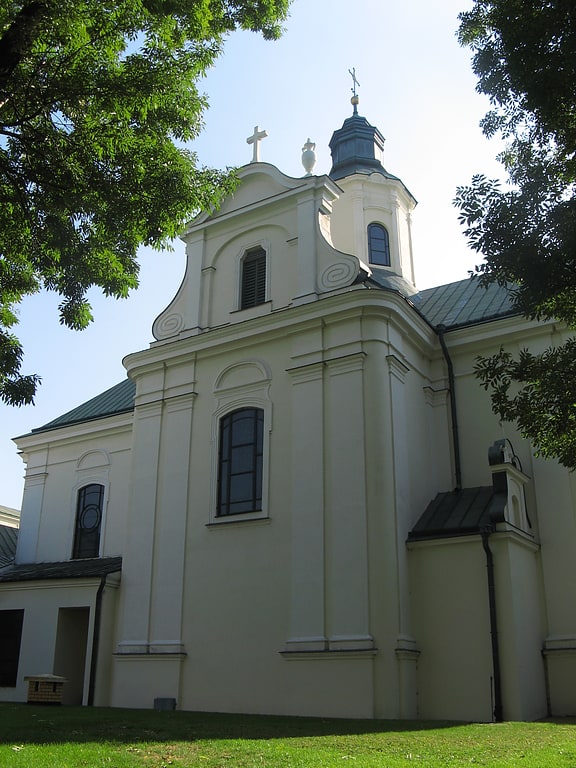
Also known as: Kościół i klasztor pomisjonarski w Lublinie
Post-missionary church and monastery in Lublin - the church of the Transfiguration of Our Lord in Lublin was erected in the years 1717–1730 for a seminary of the Congregation of the Mission, after the suppression of the monastery by Russians during the time of the Partitions of Poland taken over by the diocese. It was built in the Baroque style, laid out on the plan of a Greek cross with a cupola above the transept. The 19th century neo-Gothic chapel adjacent to the church has a modern iconostasis designed by Jerzy Nowosielski and is today used by Greek Catholic alumni. The palace from the first half of the 17th century, with its relief decorated with scenes from Polish history is the oldest part of the monastery. The Neo-Baroque monumental wing of the monastery, designed by Władysław Siennicki, dates back to 1908. The complex is surrounded with a 19th-century neo-Gothic wall.[5]
Address: Wyszyńskiego 6, 20-102 Lublin
Lublin Holocaust Memorial
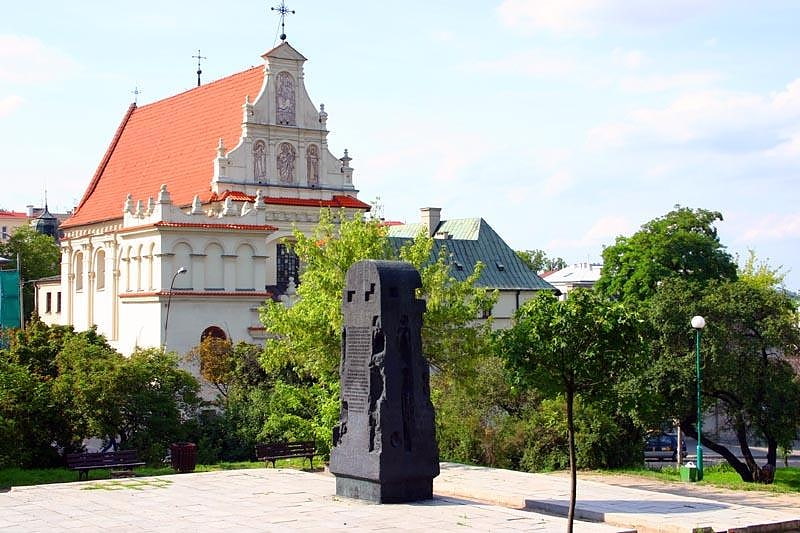
The Holocaust Memorial in Lublin commemorates the Jewish inhabitants of the city who were killed during the Holocaust. It was unveiled in 1963.[6]
Lublin New Town Hall
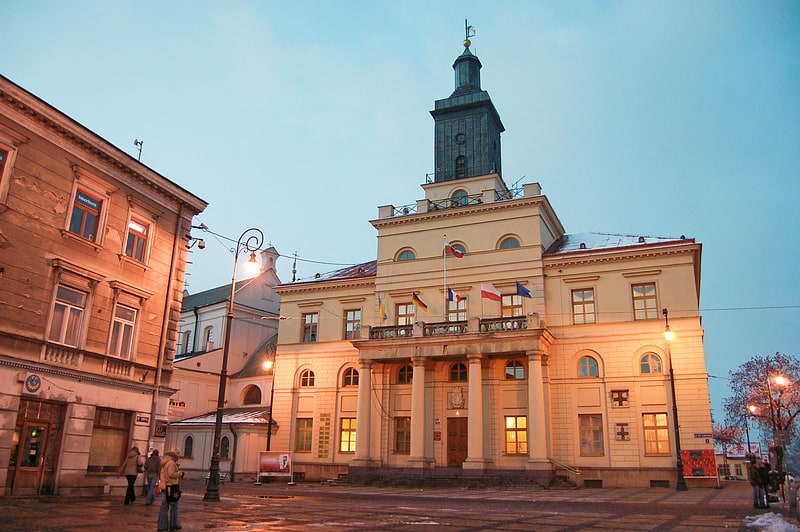
Also known as: Nowy Ratusz w Lublinie
Lublin New Town Hall is a town hall built in the Classical architectural style in between 1827 and 1828, in Lublin, Poland. It is located on plac Króla Władysława Łokietka.
The building was built in the location of a former monastery of Discalced Carmelites.
The present day town hall continues to function as the seat for the local authorities, being the seat of the President of Lublin and the Youth City Council.[7]
Chachmei Lublin Yeshiva Synagogue
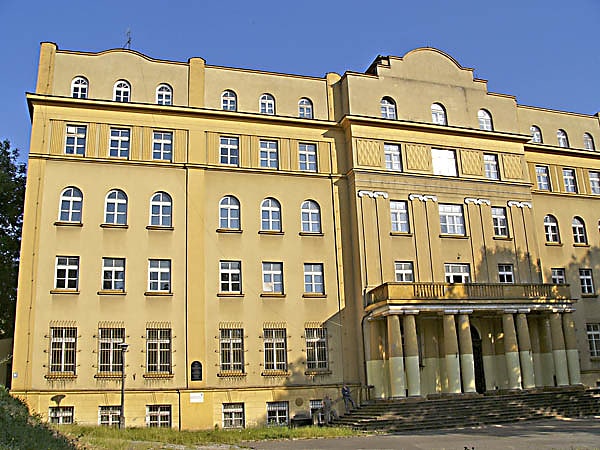
Also known as: Synagoga w Jeszywas Chachmej Lublin
Synagogue in Lublin, Poland. The Synagogue in Chachmei Lublin Yeshiva is a synagogue located in Lublin, Poland, in the building of Chachmei Lublin Yeshiva, on Lubartowska 85 Street.[8]
Galeria Labirynt

Art gallery in Lublin, Poland. Galeria Labirynt was established in 1956 as the Bureau of Artistic Exhibitions in Lublin, Poland. It presents a variety of art disciplines including installations, video art, performance art, multimedia, photography, film, art, building, painting, and drawing.[9]
Address: ul. ks. J. Popiełuszki 5, 20-052 Lublin
Old Jewish Cemetery

Also known as: Stary cmentarz żydowski w Lublinie
Cemetery in Lublin, Poland. The Old Jewish Cemetery, in Lublin, Poland, is located on a hill between Kalinowszczyzna and Sienna Streets. The cemetery overlooks the Old Town and is entirely surrounded by a high, seventeenth-century wall. It is located on the site of a former medieval fortress, and was once surrounded by numerous backwaters.
The cemetery was probably founded in 1541, although some sources give a much earlier date. The first written mention of the cemetery dates from 1555, when a privilege was issued to Polish Jews permitting burial in the area.
Many distinguished representatives of the Lublin Jewish community are buried there. Many of them have monumental and richly decorated matzevot headstones, but there are also matzevot without ornaments, which are evidence of modesty. In 1939 the cemetery probably held up to 3,000 matzevot. During the German occupation of Poland in 1939 and the start of the Holocaust, many of the matzevot were demolished or were used for street paving. The matzevot of several significant figures, however, remain.
In the 1980s, the Association for the Preservation of the Jewish Heritage in Lublin (Towarzystwo Opieki nad Pamiątkami Kultury Żydowskiej) began to put the cemetery in order and to make a detailed inventory. Between 1988 and 1991 several antisemitic acts of vandalism took place, as a result of which 40 further matzevot (Macewy) were destroyed.
Currently, the Old Jewish Cemetery in Lublin provides some of the last surviving physical evidence of the centuries-old presence of Jews in the city.[10]
Church of St. Josaphat
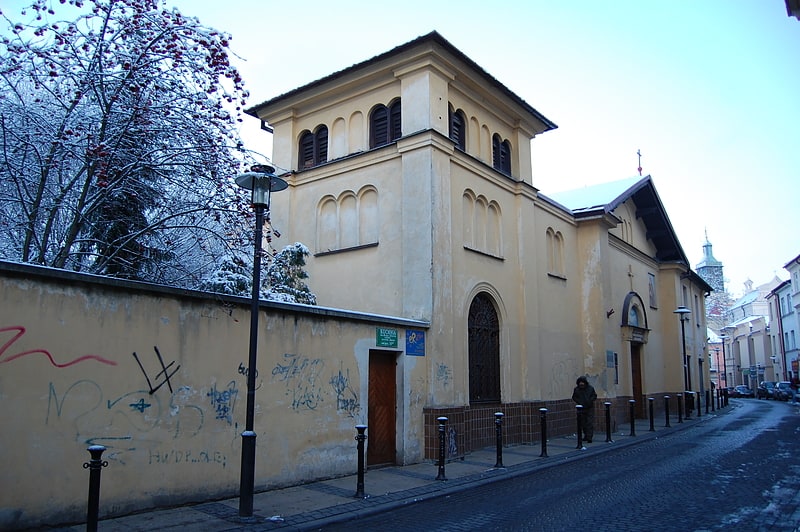
Also known as: Kościół św. Jozafata w Lublinie
Church of St. Josaphat in Lublin was built by Greek merchants in 1786 upon the consent of king Stanisław August Poniatowski. In the second half of the 19th century the temple which was originally dependent on the patriarch of Constantinople was taken over by the Russian Orthodox Church and in 1922 it became the property of the Roman Catholic Church. At present it is Saint Josaphat's church which until recently was also used by Greek Catholics.[11]
Address: Zielona 3, 20-400 Lublin
National Museum
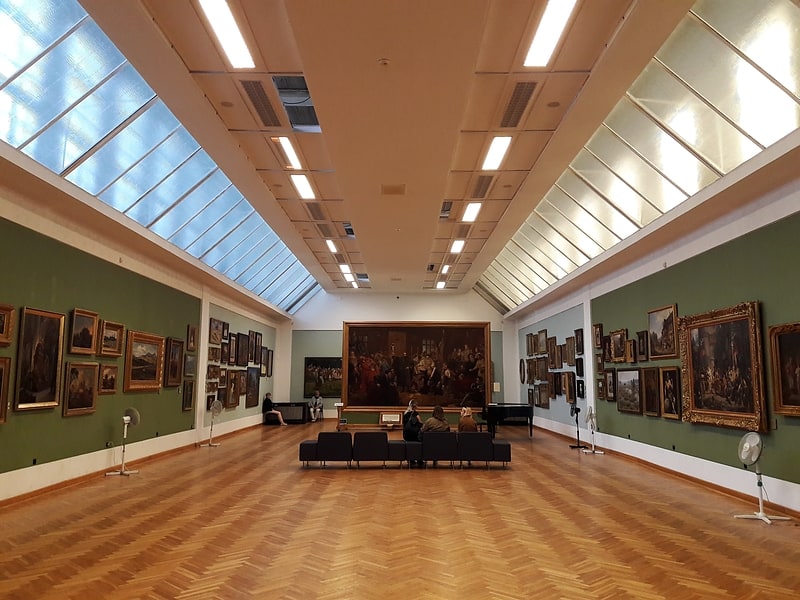
Also known as: Muzeum Lubelskie w Lublinie
Museum in Lublin, Poland. The National Museum in Lublin is one of the oldest and largest museums in Eastern Poland, located in Lublin. It was created in 1914, and received its own building in 1923.[12]
Ośrodek Sportowy-Rekreacyjny RELAND

Watersports, Water ski, Lake
Address: Żeglarska 5a, Lublin
St. Joseph's Church

Also known as: Kościół św. Józefa Oblubieńca Najświętszej Marii Panny w Lublinie
St. Joseph's Church is a 17th-century Roman Catholic church in Lublin. The building's construction was founded by Katarzyna from Kretków Sanguszkowa. Her portrait is displayed inside the church. The church was built between 1635 and 1644. The building has the Lublin Renaissance architectural style. The building's façade has two figures, St. Teresa of Ávila's and St. John of the Cross. The church has a nave with a chancel. The church, together with the abbey, was raised by the Carmelites.[13]
Biuro Karier KUL
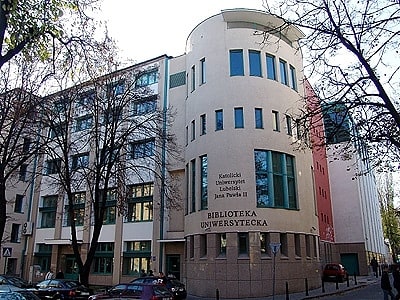
Also known as: Katolicki Uniwersytet Lubelski Jana Pawła II
University in Lublin, Poland. John Paul II Catholic University of Lublin, established in 1918. It is the only private college in Poland with the status of a university.[14]
Address: Al. Racławickie 14, Lublin
Maria Curie-Skłodowska University
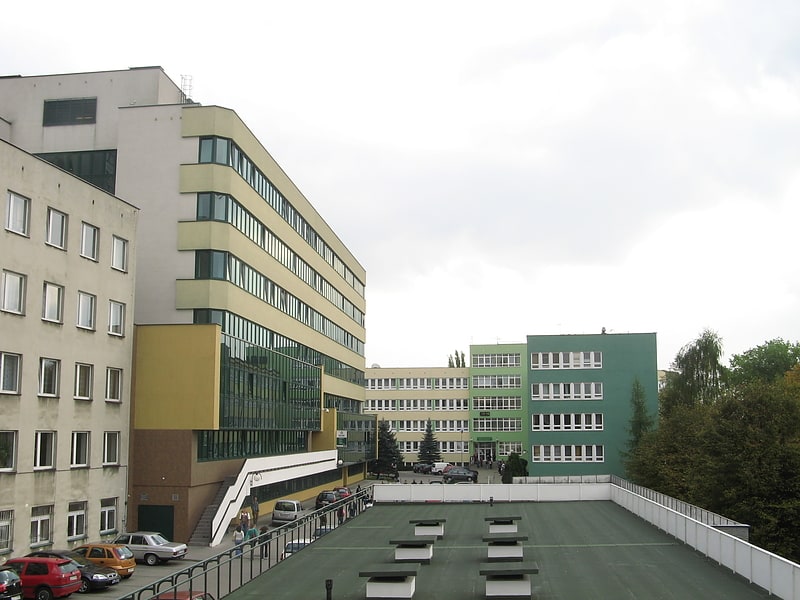
Also known as: Uniwersytet Marii Curie-Skłodowskiej w Lublinie
University in Lublin, Poland. Maria Curie-Skłodowska University was founded October 23, 1944 in Lublin. It is named in honour of Marie Curie-Sklodowska. Currently the number of students is almost 36,000. The university has 302 professors, 231 habilitated doctors, 826 senior lecturers, and 1829 teachers in total. Total staff is 3628. To meet the growing demand for higher education, the university has established branches in other cities.[15]
Address: Pl. Marii Curie-Skłodowskiej 5, Lublin
Medical University of Lublin
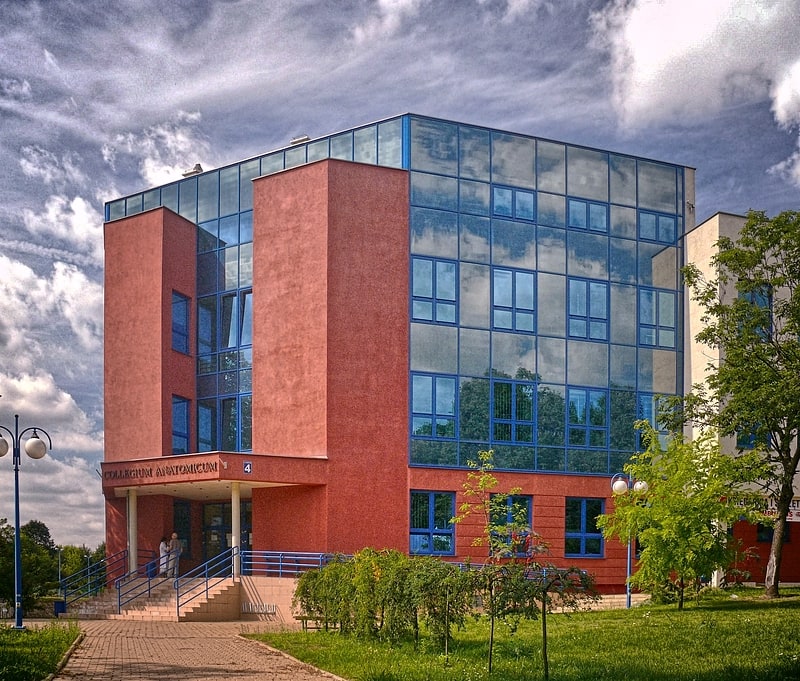
Also known as: Uniwersytet Medyczny w Lublinie
Graduate school in Lublin, Poland. The Medical University of Lublin dates back to 1944 in Lublin, Poland. The university gained its autonomy in 1950. Over the years, new departments were added such as the Department of Dentistry in 1973.
The university maintains lively international scientific contacts in cooperation with Hvidovre Hospital in Copenhagen, Denmark; Ziekenhuis-Tilburg Hospital (Netherlands), and Lviv Medical University in Ukraine, among others.[16]
Address: Al. Racławickie 1, Lublin
Politechnika Lubelska
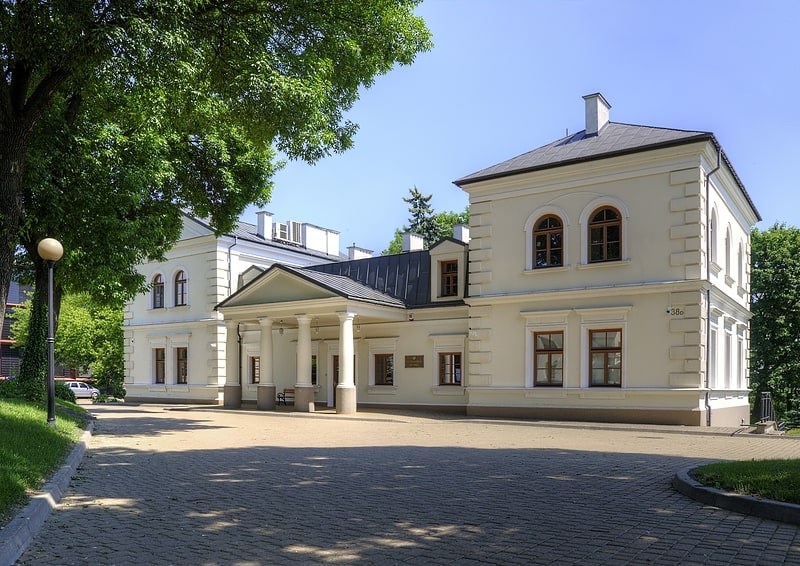
University in Lublin, Poland. Lublin University of Technology is an engineering university in Lublin, Poland. It was established on May 13, 1953, and currently has 7,787 students.[17]
Address: Ul. Nadbystrzycka 38 D, Lublin
University of Life Sciences in Lublin

Also known as: Uniwersytet Przyrodniczy w Lublinie
Higher educational institution in Lublin, Poland. The University of Life Sciences in Lublin is a multi-profile higher education institution, which integrates a wide range of agricultural, biological, veterinary, technical and socioeconomic sciences in Poland. Although the university was established in 1955, its history stems back to 1944 with the creation of the Agrarian and Veterinary Faculties within the new Maria Curie-Skłodowska University. In 1955, these two faculties, together with the Faculty of Zootechnics, were spun off to create a new institution, originally called the Lublin Higher School of Agriculture. It was called the Lublin Agricultural Academy from 1972, and took its present name in 2008.[18]
Address: Ul. Akademicka 13, Lublin
Evangelical-Augsburg Church
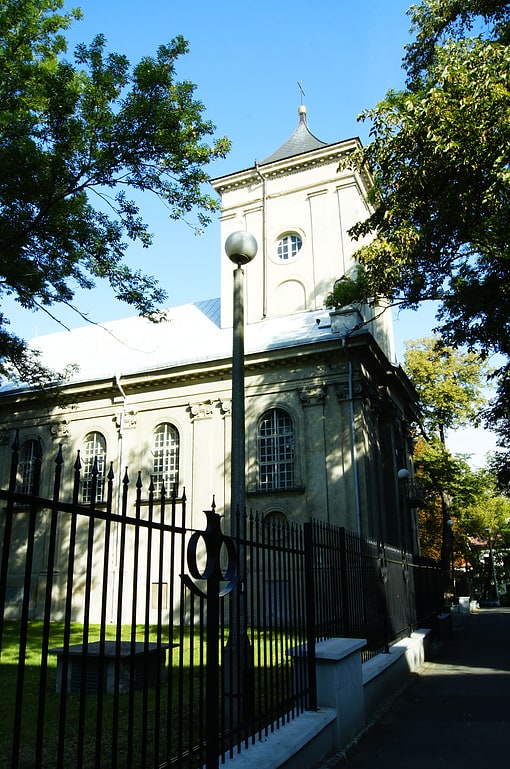
Also known as: Parafia Ewangelicko-Augsburska Świętej Trójcy w Lublinie
Lutheran church in Lublin, Poland. The Evangelical-Augsburg Holy Trinity Church in Lublin – is the fourth largest community of the Evangelical-Augsburg Church in Poland within the Warsaw Diocese.[19]